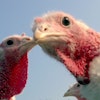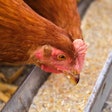China Feed Industry Association data have shown compound feeds accounting for almost 162 million metric tons of the total of 191 million metric tons of all feeds produced by Chinese feed mills in 2013. On association figures, this meant a 1.2 percent reduction in China's compound feed production, while total feed tonnage was down by 1.8 percent.
Our assessment of the national output of commercially manufactured compounds for food animals indicates a similar downturn of almost 1.3 percent, to a level in 2013 of 140.5 million metric tons.
Beyond doubt is that, in the words of a China feed industry insider, 2013 was one of the "toughest years" on record for every business producing compound feeds commercially to supply to livestock and poultry farms. There was a slightly better story in the aquafeeds segment.
While mills manufacturing compounds were hit hard, the manufacturers of premixes enjoyed an excellent year as farms tried to trim some cost by mixing their own feeds where possible.
Bird flu impacts Chinese poultry sector
China entered 2013 with an already weakening consumer market for meat due to a food safety incident and soon encountered a further drop in consumption due to the slowdown in growth of the national economy. Farm prices for meat and eggs were poor, even as feed costs remained inflated by the high-priced grain market in the second part of 2012.
Disease worries then made the situation worse when different variants of avian influenza virus hit poultry units and further upset consumers' confidence in buying chicken and eggs. Panic following the first reports of a new H7N9 bird flu in March 2013 almost halved poultry consumption rates over the next two months. Schools and factory canteens took chicken off the menu. Western-style restaurants struggled to win customers.
At one stage, broiler feed sales fell by more than 30 percent. The impact was seen in the financial losses for the first six months of trading registered by feed makers as well as by poultry companies. Ministry of Agriculture reports suggested that the total feed tonnage produced in China in the first half of the year had dropped by as much as 12 percent. Continuing mediocre chicken prices brought more weakness in the second half after prompting a reduction in the bird inventory of the poultry sector.
Recovery ahead
Increased premix sales in 2013 ended a trend of premixes losing market share to compounds over recent years. But insiders say this is likely to be just a short-term pause, with large compound feed companies expected to recover quite quickly and to do well in the long run. Size will mean strength, not only to import corn directly as China's requirement for imported maize escalates, but also because smaller companies will be unable to comply with the new licensing conditions for feed manufacturing enterprises that were introduced by the Beijing government at the end of 2012 as part of its determination to improve food safety.


















